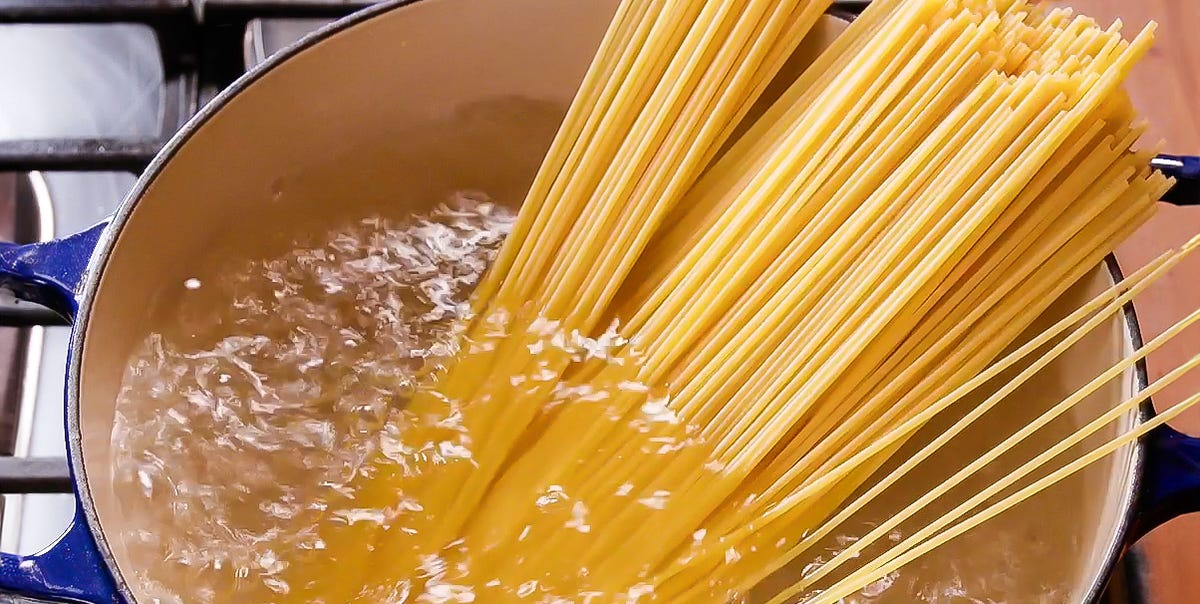- A recent study found that eating pasta—especially in social settings—can increase happiness.
- Nutrition experts emphasize that pasta can be a healthy part of a balanced diet.
- To make pasta meals more nutritious, dietitians recommend limiting pasta to 25% of the plate while incorporating fiber-rich vegetables and protein sources, such as meat, beans, or tofu.
If you love pasta, you may not be surprised by recent research that suggests pasta can boost happiness. A study published in Food Science & Nutrition found that eating pasta is associated with feelings of increased happiness, reduced stress, and greater mindfulness, especially when enjoyed in social settings with family and friends. The study, which included a survey of more than 1,500 people—all Italians—revealed that 41 percent of respondents associate pasta with family, while 21 percent link it to positive emotions.
The researchers used a two-part method. First, they conducted an online survey with 1,532 Italians to measure their emotional associations with pasta, and then tracked a subset of 83 participants over two weeks to capture real-time emotional responses before and after meals involving pasta.
Related Story
People sometimes avoid pasta because it’s high in carbs, but pasta has plenty of nutritional value. “I strongly believe that anything in moderation can be part of a healthy, well-balanced diet,” says Keerthana Kesavarapu, D.O., director of the Rutgers Center for Metabolic Health and Weight Management. “Most pastas are fortified with vitamins and minerals, and whole wheat pasta also can provide you with increased fiber.”
Pasta is also a great meal option for any day of the week because it’s quick, versatile, convenient, and affordable. “Pasta is like a blank canvas,” says Jacinda McMullen, M.S., R.D., at Cooper University Health Care. “You can make so many different meals. Adding proteins, vegetables, spices, and sauces helps increase variety in the diet, which has both emotional and nutritional benefits.” It’s also shelf-stable and cheap—at about 20 cents per serving!
Related StoryIs Pasta Healthy?
Short answer? Yes! “Pasta can absolutely be incorporated as a healthy part of the diet,” says McMullen. “Most pasta products available at grocery stores are made with enriched flour. This makes them a great source of vitamins B1, B2, and B3, as well as iron and folic acid.”
That being said, you do need to manage portions. “Pasta is often overconsumed, leading to excessive carbohydrate and caloric intakes, which can contribute to unwanted weight gain and large spikes in blood sugar,” says McMullen. However, you still can enjoy pasta by keeping serving sizes sensible.
A serving size differs depending on each person’s calorie needs. Generally speaking, the recommended serving for pasta is about ½ cup when dry and about 1 cup when cooked, McMullen says.
Additionally, the pasta and happiness study demonstrates the importance of mindfulness in the eating process. “Taking your time to really enjoy a meal, especially in the presence of good company, can greatly enhance satisfaction after meals, which itself helps you make better nutrition choices overall,” McMullen says.
Is Whole Wheat Pasta Better For You?
Whole wheat pasta is a great way to boost your daily fiber intake, which many of us often skimp on. “Whole wheat pasta contains more than double the amount of fiber than white pasta. Thanks to this extra fiber, whole wheat pasta is a good, slow-burning source of carbohydrates, which leads to more stable blood sugars,” McMullen says.
Whole wheat pasta also has more naturally occurring vitamins and minerals, including B vitamins and iron (though these are added back to refined pasta). However, whole wheat contains other nutrients, such as magnesium and zinc, too, McMullen says.
Other, less common types of pasta can also be healthy. “I always suggest switching to alternative pastas such as black bean, lentil, or quinoa pasta,” Kesavarapu says. “Or use a high-protein pasta, such as chickpea pasta.”
Related StoryHow Can You Make Pasta Healthier?
For starters, make the pasta portion just 25 percent of your overall meal. Then pile on veggies and add protein to promote greater satiety. Aim for at least ½ cup of your protein choice, such as meat, chicken, or fish. Also, choose fibrous vegetables such as broccoli, spinach, or asparagus, McMullen says.
There are additional ways to boost protein, especially if you follow a plant-based diet. “I always encourage blending a protein into the sauce, such as ricotta, cannellini beans, or soft tofu, and adding beans and lentils to the pasta dish itself,” Kesavarapu says.
